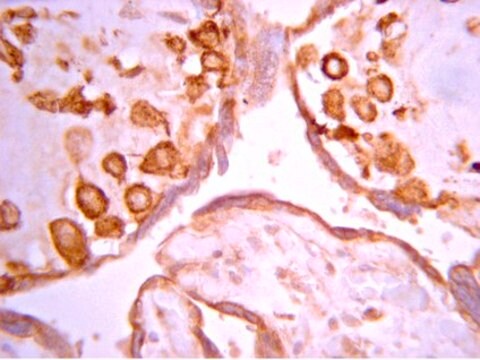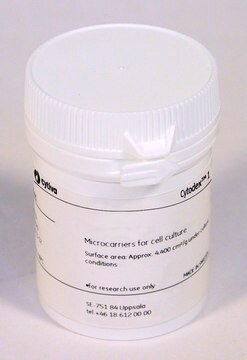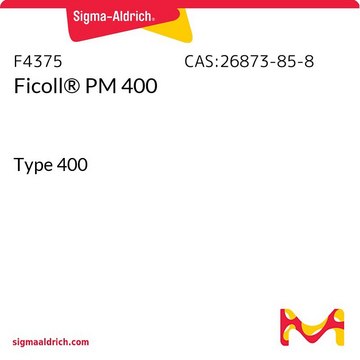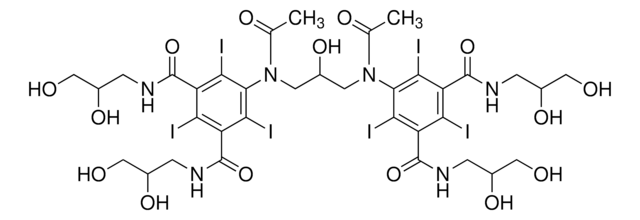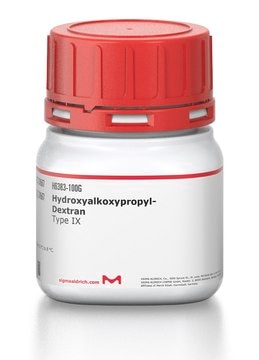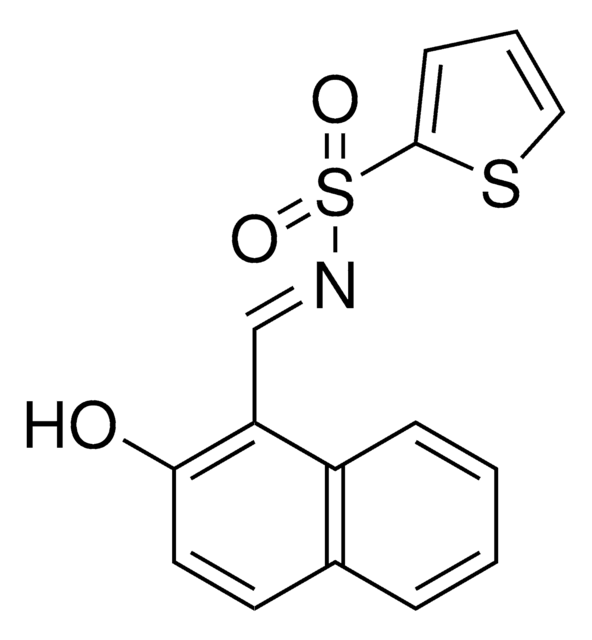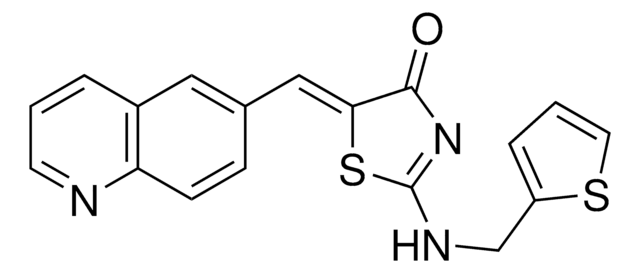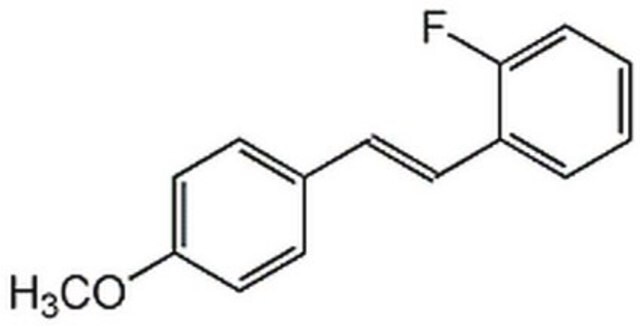P0370
Anti-phospho-Myristoylated Alanine-Rich Protein Kinase C Substrate (pSer152/156) antibody produced in rabbit
affinity isolated antibody, buffered aqueous glycerol solution
Sinonimo/i:
Anti-phospho-MARCKS (pSer152/156)
Autenticatiper visualizzare i prezzi riservati alla tua organizzazione & contrattuali
About This Item
Prodotti consigliati
Origine biologica
rabbit
Livello qualitativo
Coniugato
unconjugated
Forma dell’anticorpo
affinity isolated antibody
Tipo di anticorpo
primary antibodies
Clone
polyclonal
Stato
buffered aqueous glycerol solution
PM
antigen 80 kDa
Reattività contro le specie
rat, human, mouse
tecniche
western blot: 1:1000
N° accesso UniProt
Condizioni di spedizione
dry ice
Temperatura di conservazione
−20°C
Informazioni sul gene
human ... MARCKS(4082)
mouse ... Marcks(17118)
rat ... Marcks(25603)
Categorie correlate
Descrizione generale
The proteins of myristoylated alanine-rich C kinase substrate (MARCKS) family are identified as the ubiquitous substrates of Protein Kinase C (PKC). There are two identified members of MARCKS family, a 32 kDa ubiquitously expressed protein and a 20 kDa protein that is expressed in brain, macrophages and reproductive tissues. MARCKS proteins have vital role to play in the development of brain, cellular migration and adhesion, phagocytosis, neurosecretion and postnatal survival. MARCKS is also a key regulator in the mucin granule release and thereby secretion of mucus in airway. The phosphorylation domain of MARCKS protein contains the serine residues (serine 152, 156 and 163) that are activated by PKC. Besides PKC, MARCKS is also a target for calcium-calmodulin (CaM) and is reported as the potential protein that mediates a crosstalk between CaM and PKC. MARCKS participates in regulation of cytoskeleton by binding with actin and cell membrane
Anti-phospho-MARCKS (pSer152/156) specifically recognizes MARCKS (80 kDa) phosphorylated at serine 152/156.
Anti-phospho-MARCKS (pSer152/156) specifically recognizes MARCKS (80 kDa) phosphorylated at serine 152/156.
Immunogeno
synthetic phosphorylated peptide derived from the region of rat MARCKS, which is phosphorylated on serine 152/156.
Applicazioni
A working dilution of 1:1000 is recommended for detection of MARCKS, phosphorylated at Ser152/156, by immunoblotting in rat hippocampal tissue homogenates.
Stato fisico
Solution in 10 mM HEPES, pH 7.5, containing 150 mM NaCl, 100 μg/ml BSA and 50% glycerol.
Esclusione di responsabilità
Unless otherwise stated in our catalog or other company documentation accompanying the product(s), our products are intended for research use only and are not to be used for any other purpose, which includes but is not limited to, unauthorized commercial uses, in vitro diagnostic uses, ex vivo or in vivo therapeutic uses or any type of consumption or application to humans or animals.
Non trovi il prodotto giusto?
Prova il nostro Motore di ricerca dei prodotti.
Codice della classe di stoccaggio
10 - Combustible liquids
Scegli una delle versioni più recenti:
Possiedi già questo prodotto?
I documenti relativi ai prodotti acquistati recentemente sono disponibili nell’Archivio dei documenti.
The MARCKS brothers: a family of protein kinase C substrates.
A Aderem
Cell, 71(5), 713-716 (1992-11-27)
Duncan F Rogers
Respiratory care, 52(9), 1134-1146 (2007-08-25)
Mucus secretion is the first-line defense against the barrage of irritants that inhalation of approximately 500 L of air an hour brings into the lungs. The inhaled soot, dust, microbes, and gases can all damage the airway epithelium. Consequently, mucus
Anna Arbuzova et al.
The Biochemical journal, 362(Pt 1), 1-12 (2002-02-07)
The proteins of the MARCKS (myristoylated alanine-rich C kinase substrate) family were first identified as prominent substrates of protein kinase C (PKC). Since then, these proteins have been implicated in the regulation of brain development and postnatal survival, cellular migration
R H Palmer et al.
FEBS letters, 378(3), 281-285 (1996-01-15)
The 80kDa Myristolated Alanine-Rich C-Kinase Substrate (MARCKS) is a major in vivo substrate of protein kinase C (PKC). Here we report that MARCKS is a major substrate for the lipid-activated PKC-related kinase (PRK1) in cell extracts. Furthermore, PRK1 is shown
Y Li et al.
The Journal of biological chemistry, 276(44), 40982-40990 (2001-09-05)
Hypersecretion of airway mucin characterizes numerous respiratory diseases. Although diverse pathological stimuli can provoke exocytotic release of mucin from secretory cells of the airway epithelium, mechanisms involved remain obscure. This report describes a new paradigm for the intracellular signaling mechanism
Il team dei nostri ricercatori vanta grande esperienza in tutte le aree della ricerca quali Life Science, scienza dei materiali, sintesi chimica, cromatografia, discipline analitiche, ecc..
Contatta l'Assistenza Tecnica.